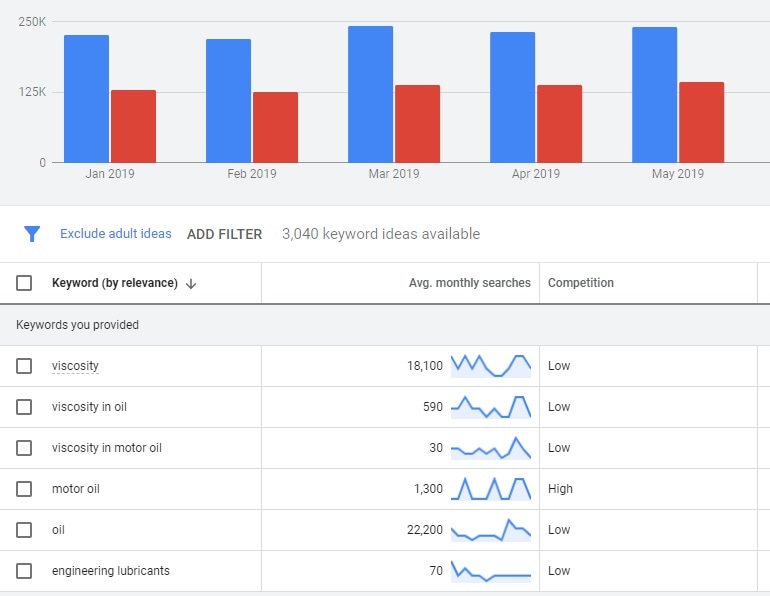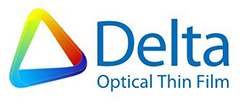
Updated 16/01//20
The world of SEO is constantly evolving, with Search Engines releasing algorithm updates all of the time it’s important to ensure that your website is fully optimised. As the algorithm changes are implemented, the web is inundated with blogs and guides covering how to apply the best SEO practices. However, these guides are often conflicting, making it hard to understand what’s going to work and what isn’t.
In this blog post, updated for 2020, we outline the common SEO mistakes which we come across time and time again, and outline how to avoid these SEO mistakes to help boost your rankings, traffic, and leads.
Keywords
Keywords are undoubtedly the most important part of any SEO campaign. They dictate who will land on your site, the intent of those users, the links you generate, and so much more. This is why keyword research should be the first step you make.
It’s tempting to skip the research and use keywords that reflect the brand you are trying to create, only your product name or what you think someone would search for; but your focus should really be on what your potential consumers or partners will be looking for. Searches are not necessarily short, either.
Around half of all searches use keywords that are 4 words or longer.
Tools like Google’s Keyword Planner help you to determine how many people are searching for the terms you feel are relevant, and give you ideas for terms you may not have thought of. Once you’ve determined your keywords, it’s important to physically go into the search engines and determine the search intent for that particular term.

In the example above from Google's keyword planner, we can see that around 18,100 searches occur for the word viscosity, we can further narrow down the search by modifying further. Viscosity in oil provides a more targeted focus with 590 searches, however if you are receiving irrelevant searches for cooking oil then you would be better off targeting the four word string Viscosity in Motor Oil. Although this keyword string only receives 30 searches per month, they will be far more likely to convert.
It goes without saying to avoid out-dated black-hat SEO tactics such as keyword-stuffing and artificial link building - By all means include useful internal and external links which enhance the user experience and aim for a keyword density of 3-5%.
On-Site Optimisation
On-site optimisation is typically the first ‘big’ SEO job people tackle, which is the way I approach a campaign as well. However in many cases, once it’s complete it is never looked at again! This tactic may well provide some quick wins, but the rankings will plateau quickly, and your results will cease to improve.
SEO is an ongoing process that works best when you develop a solid strategy that evolves based on changes and trends in the scientific market. You should consistently monitor your meta data to ensure your on-site optimisation is working. Continue to monitor your top ranking terms to ensure you don’t lose them. For terms yet to rank, reassess the keyword, the placement, the copy and see if another tactic will have better results. Furthermore, here are some quick wins to focus on for On-Site Optimisation:
- SEO friendly URLs
- H1 tags (using your keyword)
- H2 tags (using variations and synonymous keywords)
- Optimized images
- 3-5% keyword density
- Responsive page design
- Prominent calls to action (CTAs)
- HTTPS (secure protocol)
- Social sharing

Investing the effort to increase your search engine rankings will bring in more of the right type of visitors and get you the leads that will help you meet your bottom-line objectives.
Content
Content is crucial for any SEO campaign,
There are several common content issues that we see across the industry;
- Low quality content
- Duplicate content
- Lack of content
As marketers are realizing the value of content marketing, a great deal of digital material is being produced. The pressure to keep publishing new content can get overwhelming, so some begin to publish anything and everything, whether it is useful or not. Sometimes less is more... if you are struggling to dedicate the necessary resources to produce one article a week, try one every two weeks to ensure that the quality does not suffer.
Sometimes, less is more
The content on your site should also be unique. Sites that opt for quantity over quality generally do not rank well (I see a common theme occurring!). Duplicate content is heavily debated in the SEO-world, and while it may not be subject to as severe penalties as it used to, it’s always a good idea to create great-quality, unique content.
Ask about SEO
Note the distinction between repurposed content (i.e. adding value with extra multimedia) and duplicating content (copying and pasting verbatim!)
Repurposed content can be one of the most effective ways to add value for your audience
If you want to achieve high rankings, you have to produce consistently readable content and add value wherever possible.
We also often see unintentional duplicate content, specifically home pages. A lot of websites are visible using both the www. prefix and without it. If this is the case, search engines can also find and index both of these pages and your site is essentially fighting with itself for the same rankings.
Links
Links should always be a big consideration for SEO, but it’s vital that you avoid old, black-hat linking tactics that could cause some serious penalties from search engines.
Typical tactics include link pages that point back to one another in an attempt to raise link popularity. Other schemes create low-value sites that exist solely for the purpose of linking. Finally, some seeking high rankings will pay others to place links on their pages or put them in pay-for-placement web directories. The major search engines know that this happens and have built systems to prevent inappropriate linking.
Questions from the Manchester SEO Workshop
Of course, you should be linking to relevant content, both within and outside of your site. The key is to link to content that is relevant and serves as an extension to the knowledge that you are sharing. When you link to interesting content, especially within your own site, you keep readers engaged, which makes it more likely that they’ll reach out to you for more information. If you’ve created engaging, unique content like we spoke about previously, it makes it so much easier to obtain incoming links from high quality sites.
When you’ve built a great backlink profile you should ensure that you keep on top of any necessary redirects, as users (and search engine bots) could end up landing on 404 pages and these users often leave the site here without seeing more.
Analytics
Most SEOs would be shocked at the amount of websites I’ve worked on where some form of Analytics isn’t set up, and where it is set up, it’s set up incorrectly. When asked, a lot of these companies were tracking performance by “the number of phone calls” or “the number of emails” they were receiving.
Ok, so if calls and emails are up, that’s great. But you’re still not getting a full understanding of how you’re getting users to the site, what they are doing on the site, and why they convert or not.
Google Analytics is the most popular analytics platform out there, but there are many others such as AZoIntel, that can provide you with the same insights.
When set up correctly, you can monitor where people are most engaged and start to mimic the UX of these pages in areas where people leave without interacting. You can also see what type of traffic is the most engaged, so you can focus more of your efforts in that area.
User Experience Wins the Day
Most scientific marketers understand that developing some sort of SEO strategy is necessary for capturing attention on the web and bringing in new leads. By avoiding these common mistakes, you can develop a plan of action that enhances user experience, attracts visitors and keeps them coming back for more.
Please contact us with your SEO questions or request your free SEO Health Check today.
Related SEO Testimonials
-

Organic traffic has increased 46.34% since working with the SEO team, but most importantly, both the quality and the quantity has improved considerably, resulting not only in more sales, but bigger sales too!
Jo Talbot Tecman Specialty Materials
-

We have seen an increase in both web generated enquiries and telephone traffic on products that are targeted. Lead/Enquiry generation is now starting to overtake us, which is a great problem to have!
Andy Adams Masteel
-

Over the past 6 months our organic traffic has increased 17.51% compared to the same period last year and the number of contact form submissions we’ve seen has risen from 0 in that period to 23
Oliver Pust Delta Optical Thin Film